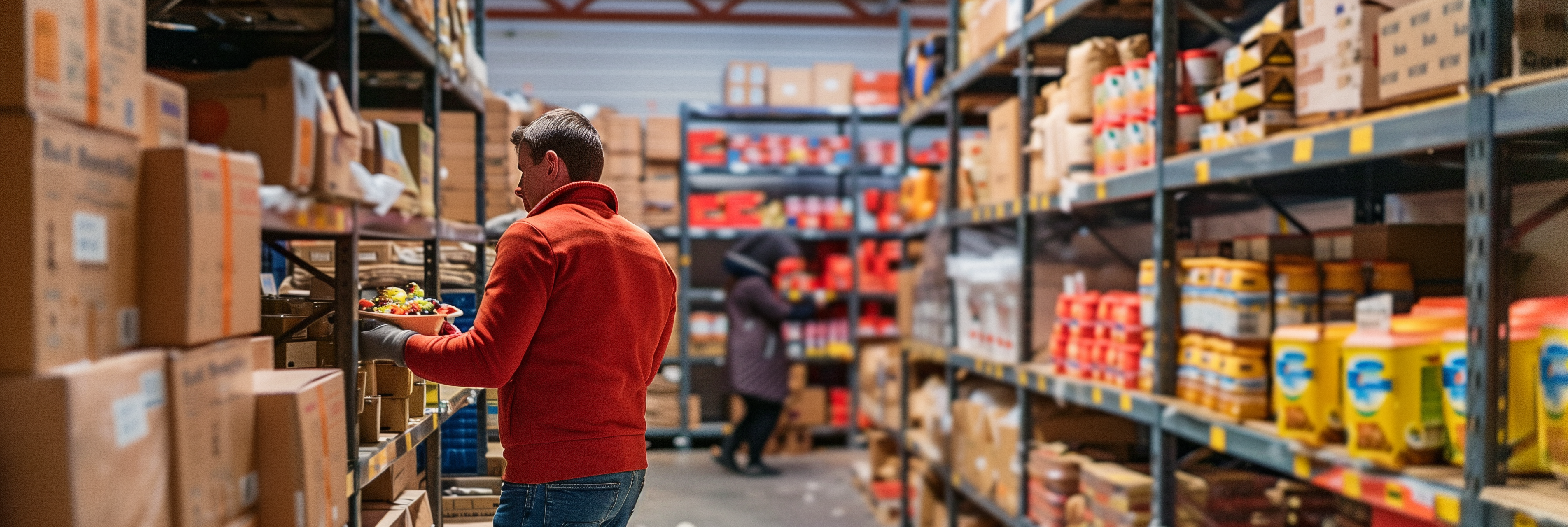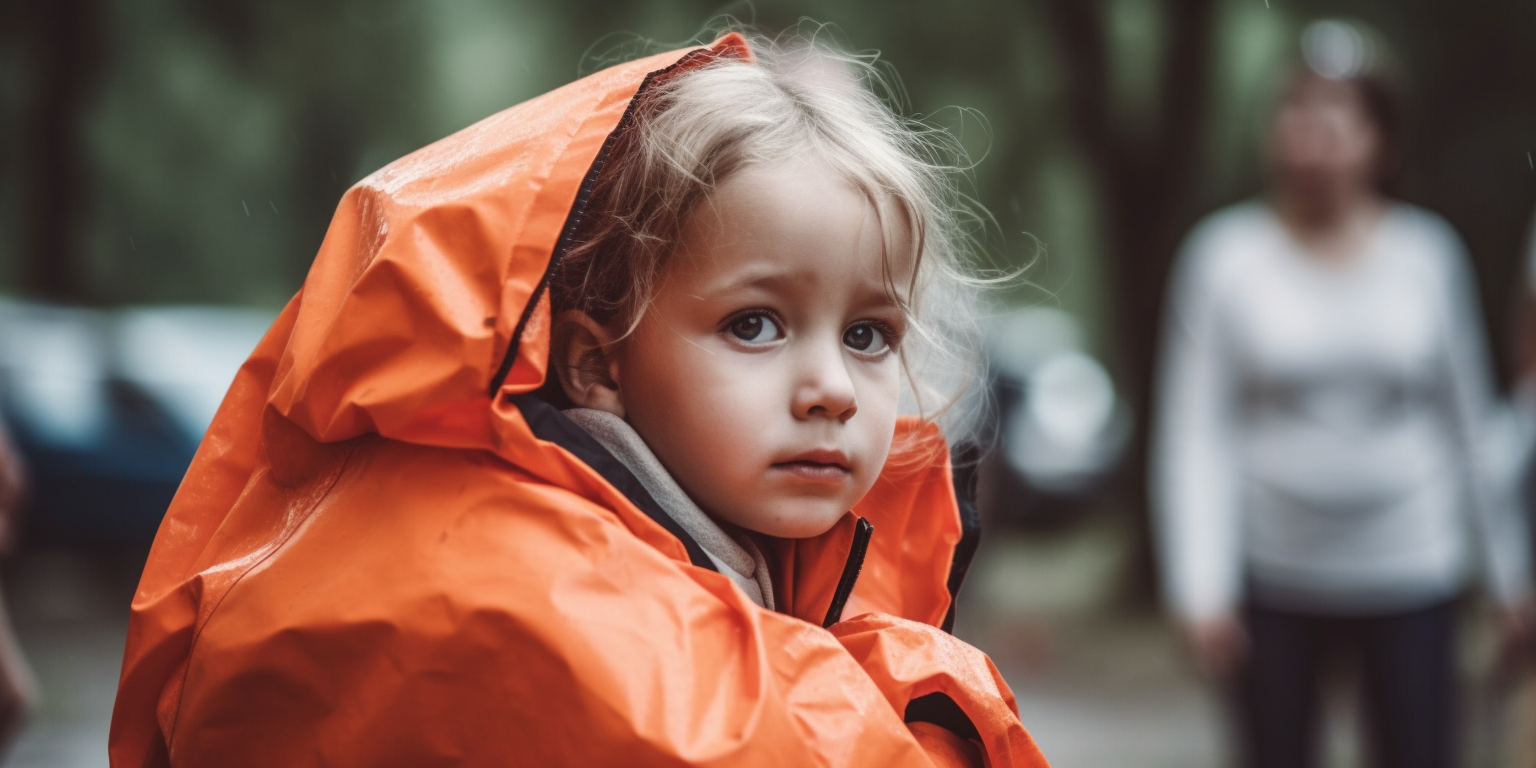
Building an Emergency Food Supply - What You Need to Know
Building an Emergency Food Supply - What You Need to Know
Preparing for emergencies and natural disasters is crucial, and having an emergency food supply is an essential part of being prepared. Not only can it help eliminate stress, worry, and inconvenience during an emergency, but it can also ensure that you and your family have enough to eat if access to food is limited.
In a recent survey by the British Red Cross, nearly two-thirds of UK adults (63%) expressed concern about how they would cope if an emergency, such as flooding, occurred in their area. However, over half of the British public (53%) admitted they don't have an emergency kit in their home. Don't let this be you - taking steps to prepare for an emergency now could make all the difference.
How Much Food Should You Store?
How much and what type of food you should store will depend on the members of your household, your preferences, special health conditions, your ability to use the food in an emergency, and the amount of storage space you have available. The UK government recommends that households should have enough food, water, and other essentials to last at least 72 hours in the event of an emergency. However, in some cases, it may be wise to consider storing more than this - for example, if you live in an area where power outages are common.
Preparing a Three-Day Emergency Supply
A three-day emergency preparedness kit will be useful for most disasters. Gathering the essential items that could be needed and putting them in one location will help you and your household through the worst days of an emergency. This short-term preparedness kit should of course include food in addition to water, personal hygiene items, torches, batteries, blankets, and other essentials recommended for emergencies.
When preparing your three-day emergency food supply, it's important to select non-perishable foods that require no refrigeration, minimal or no preparation or cooking, and little or no water. According to the CDC, households with emergency supplies were more likely to be prepared for disasters and had a higher likelihood of being able to evacuate quickly. Some great options to include in your three-day emergency food supply are ready-to-eat canned meats, fruits, and vegetables; canned juices, milk, and soup; high-energy foods like peanut butter, crackers, granola bars, and trail mix; and foods for infants, elderly persons, or persons on special diets.
Preparing a Two-Week Emergency Supply
Even though it is unlikely that most emergencies will cut off your food supply for two weeks, it's a good idea to have a two-week emergency supply of food on hand, especially if you live in an area where power outages are common. A study by the CDC in the USA (where preparedness is taken more seriously) found that households with an emergency supply were more likely to be prepared for disasters and had a higher likelihood of being able to evacuate quickly.
To build your two-week emergency food supply, start by increasing the amount of basic foods you normally keep on your shelves. Make a list of all family members by name, indicating any special needs, and list all staple foods on your shelves now. Indicate the amount available, date purchased, date opened, and use-by/replace date if known. Post this list near storage cabinets or closets and update it when changes occur.
When it comes to meals, plan food supplies so that at least one well-balanced meal can be eaten each day. Consider including dehydrated or freeze-dried foods, which are lightweight and take up little room. However, you will need to plan extra water supplies for rehydrating them for use. Some dehydrated foods, like fruits, can be eaten as is. If some foods in your kit will require cooking, be sure to also include some that are ready to eat. Fires or stoves for cooking may be available during some emergencies; sometimes you may not even have those available, or at least not all the time. Keep in mind that short-term emergency supplies need to emphasize survival, energy, and hydration (water), but planning ahead means that you can also plan nutritionally balanced meals.
Food Ideas That Keep on the Shelf
When selecting food items for your emergency supply, it's important to choose items that are non-perishable, require little or no preparation or cooking, and provide a good source of energy and nutrients. You should also consider the dietary needs and preferences of the members of your household when making your selections.
Here are 25 food items to consider including in an emergency food supply:
- Canned meats (e.g. chicken, beef, tuna)
- Canned fish (e.g. salmon, sardines)
- Canned fruits (e.g. peaches, pears, pineapple)
- Canned vegetables (e.g. corn, peas, green beans)
- Canned soups (e.g. chicken noodle, tomato)
- Freeze-dried meals (e.g. beef stew, macaroni cheese, chicken & rice)
- Peanut butter
- Crackers
- Granola bars
- Nuts (e.g. almonds, cashews, peanuts)
- Trail mix
- Dried fruits (e.g. raisins, apricots, cranberries)
- Shelf-stable milk (e.g. UHT milk)
- Powdered milk
- Ration bars
- Rice
- Pasta
- Cereal
- Honey
- Oatmeal
- Instant coffee & Tea bags
- Bouillon cubes or broth
- Cooking oil (e.g. olive oil, canola oil)
- Salt and pepper
- Sugar
In addition, there are commercially available emergency food kits, such as MREs (Meals-Ready-to-Eat), which require little or no preparation. However, these foods are often high in sodium and preservatives, so it's important to supplement them with fresh fruits and vegetables when possible.
For a more comprehensive list of ambient foods (with approximate shelf-lives and pricing) for including in your Emergency Food Supply, we suggest reading Building Your Food Stockpile: 50 Long-Life Foods To Include.
In an Extended Power-Cut...
In the event of a power outage, it's important to use perishable food and foods from the refrigerator first, followed by foods from the freezer. Food in the freezer will remain frozen longer if it is well-filled, with general guidance at 48 hours. For a half-filled freezer it will start defrosting after 24 hours. If you keep opening the freezer doors then this will reduce these times considerably, so to minimize the number of times you open the freezer door, draw up a list of contents and plan your meals accordingly. Finally, when all other foods have been consumed, begin to use non-perishable foods and staples such as freeze dried foods, canned foods, rice and dried pasta.
Canned Foods
One of the best choices for emergency food supplies is commercially canned foods. According to the USDA, canned foods can last up to five years or longer. However, it's important to inspect your supply periodically to make sure there are no rusty, leaking, bulging, or badly dented containers and no broken seals. Large or severe dents in the sides of a can may also break a seal around the can end or seam, even though it might not be obvious. Replace items found in any of these conditions and do not consume the contents.
For some suggested meal ideas created using canned foods, feel free to read 25 Meal Ideas Made Exclusively From Canned Ingredients.
Final Thoughts
Preparing an emergency food supply may seem like a daunting task, but it's a crucial step in ensuring your family's safety in the event of an emergency. Start by planning for a three-day emergency supply and work your way up to a two-week supply. When selecting foods, choose non-perishable items that require little or no preparation or cooking, and store them in a cool, dry place. With a little bit of planning and preparation, you can help ensure that you and your family are well-fed and well-prepared for any emergency.
Suggested Articles
Emergency Food for Low-Income Individuals: Access and Affordability in Times of Crisis
During times of crisis, securing basic necessities becomes a challenge, with food security becoming an urgent concern...
Prepping for Emergencies with Children: A Comprehensive Guide for UK Families
How to Keep Your Family Safe, Informed, and Ready for Any Emergency Introduction Emergencies can happen at any time, ...
Emergency Food Supply for Multi-Day Power Outages: A Comprehensive Guide for UK Residents
Power outages can strike at any time, and with an increasing demand for electricity and a more volatile climate, the ...





